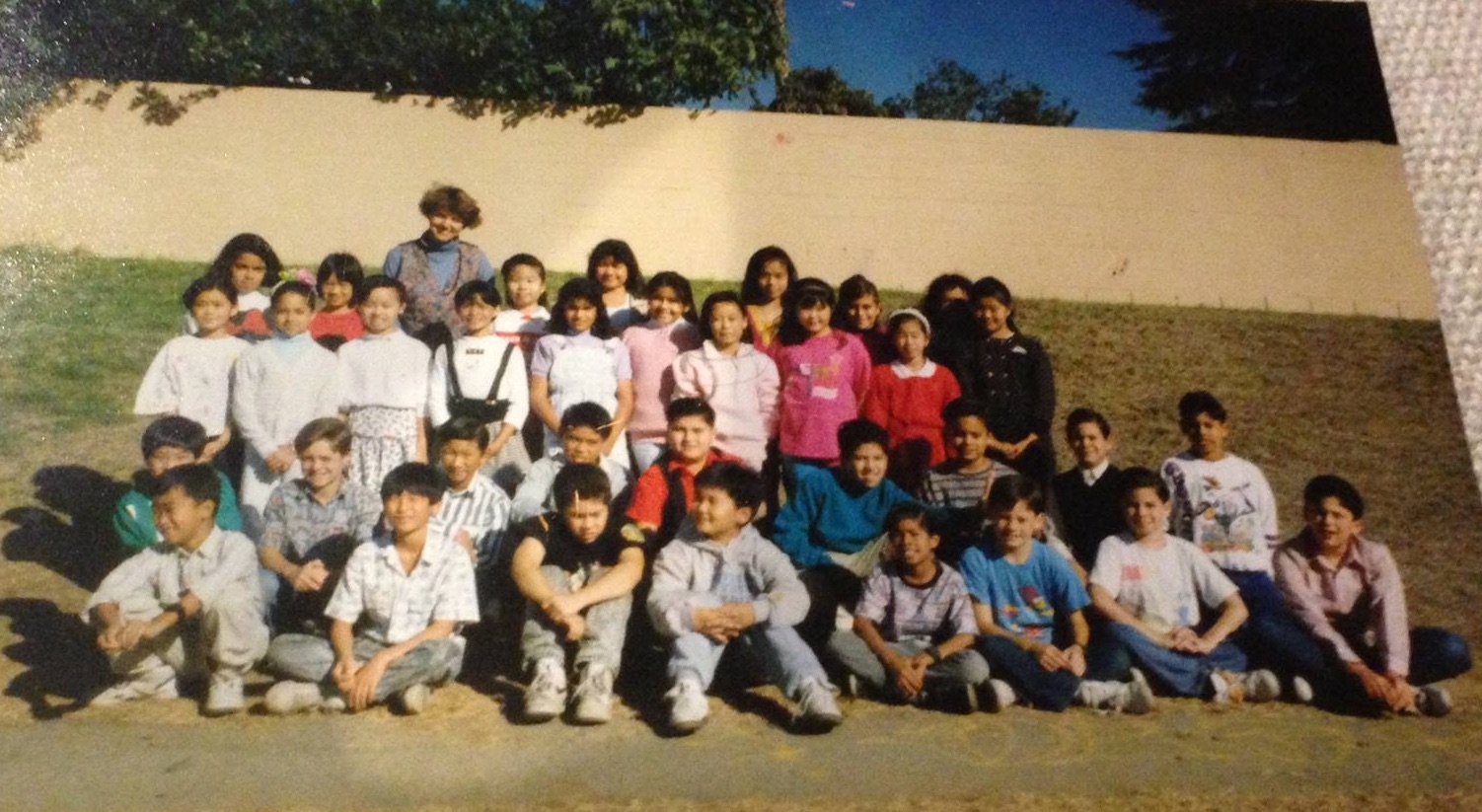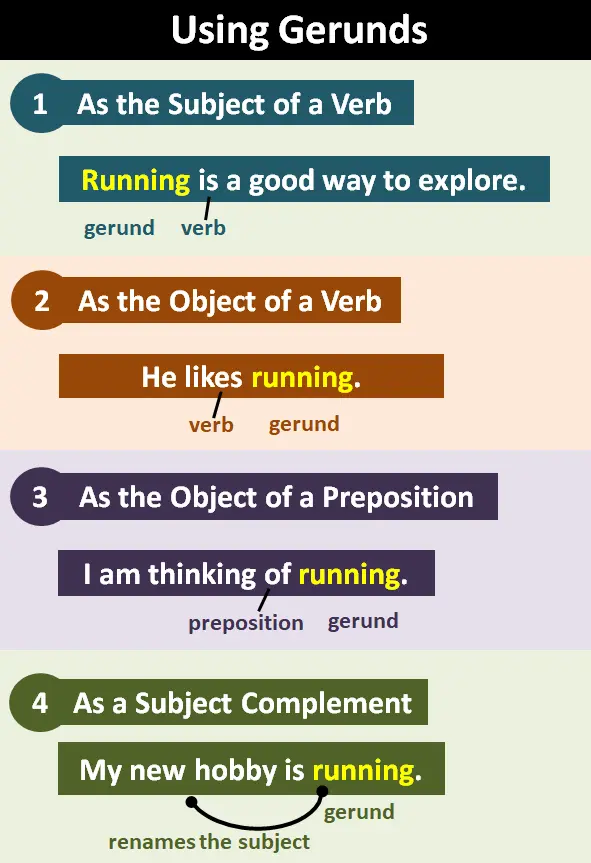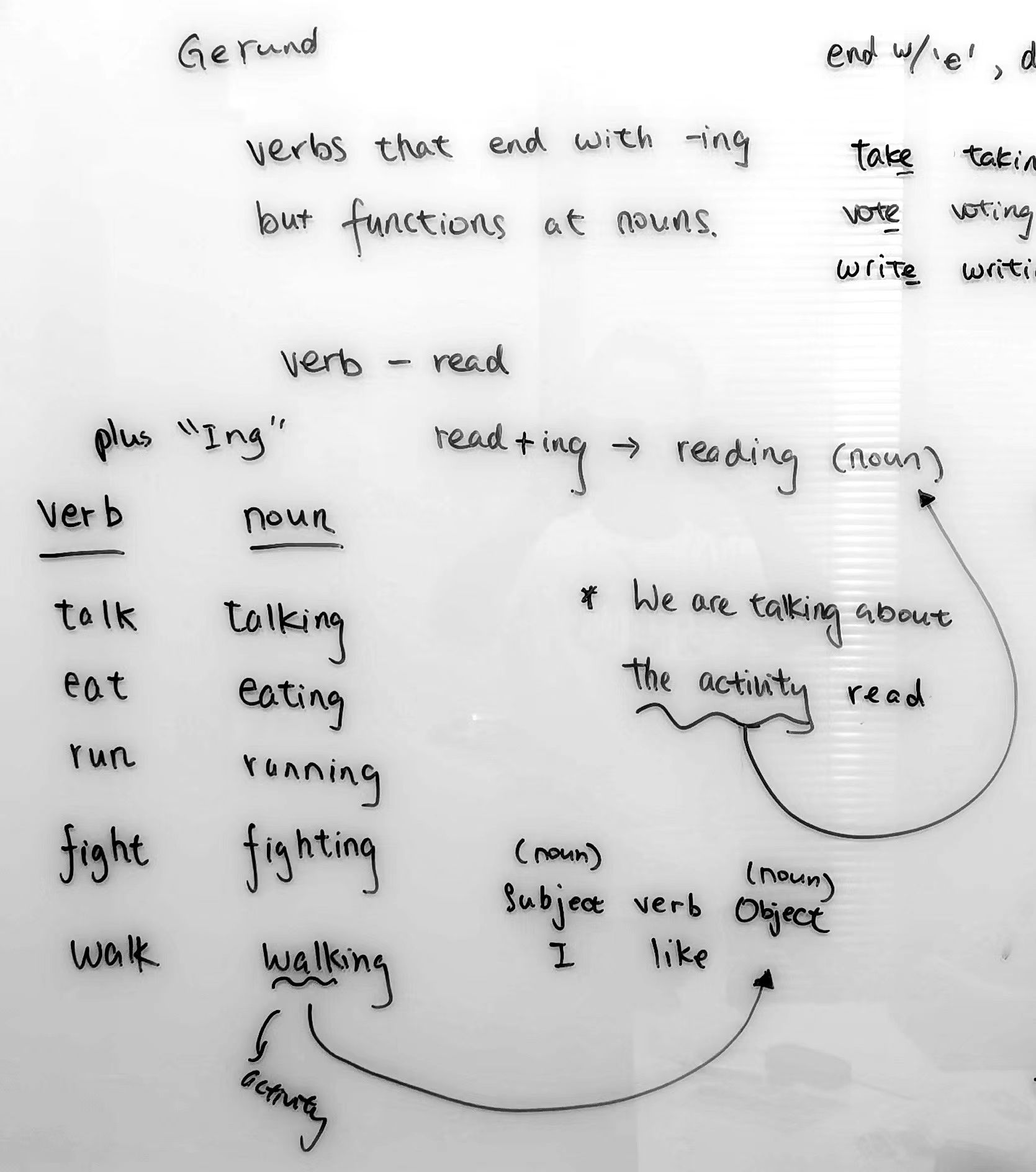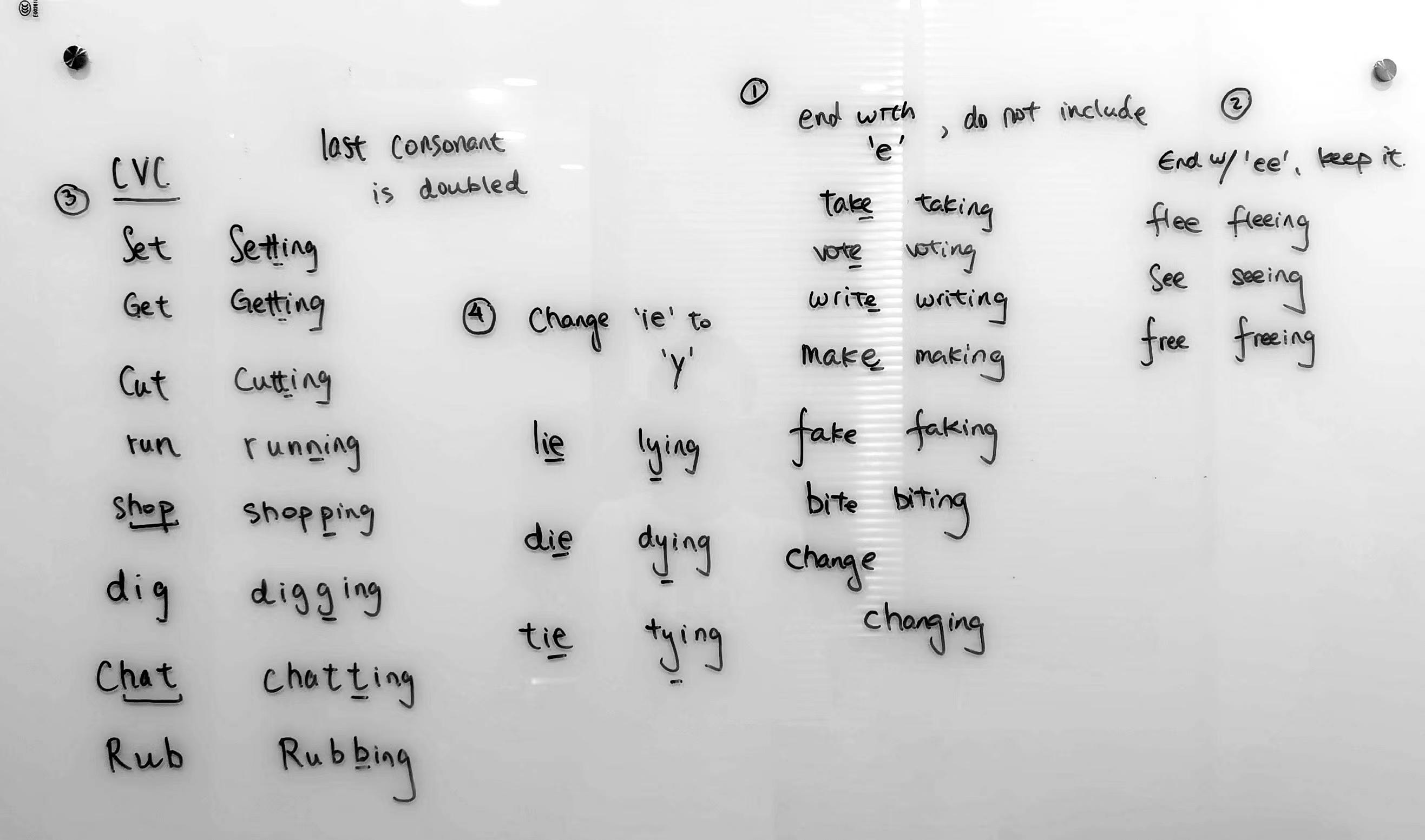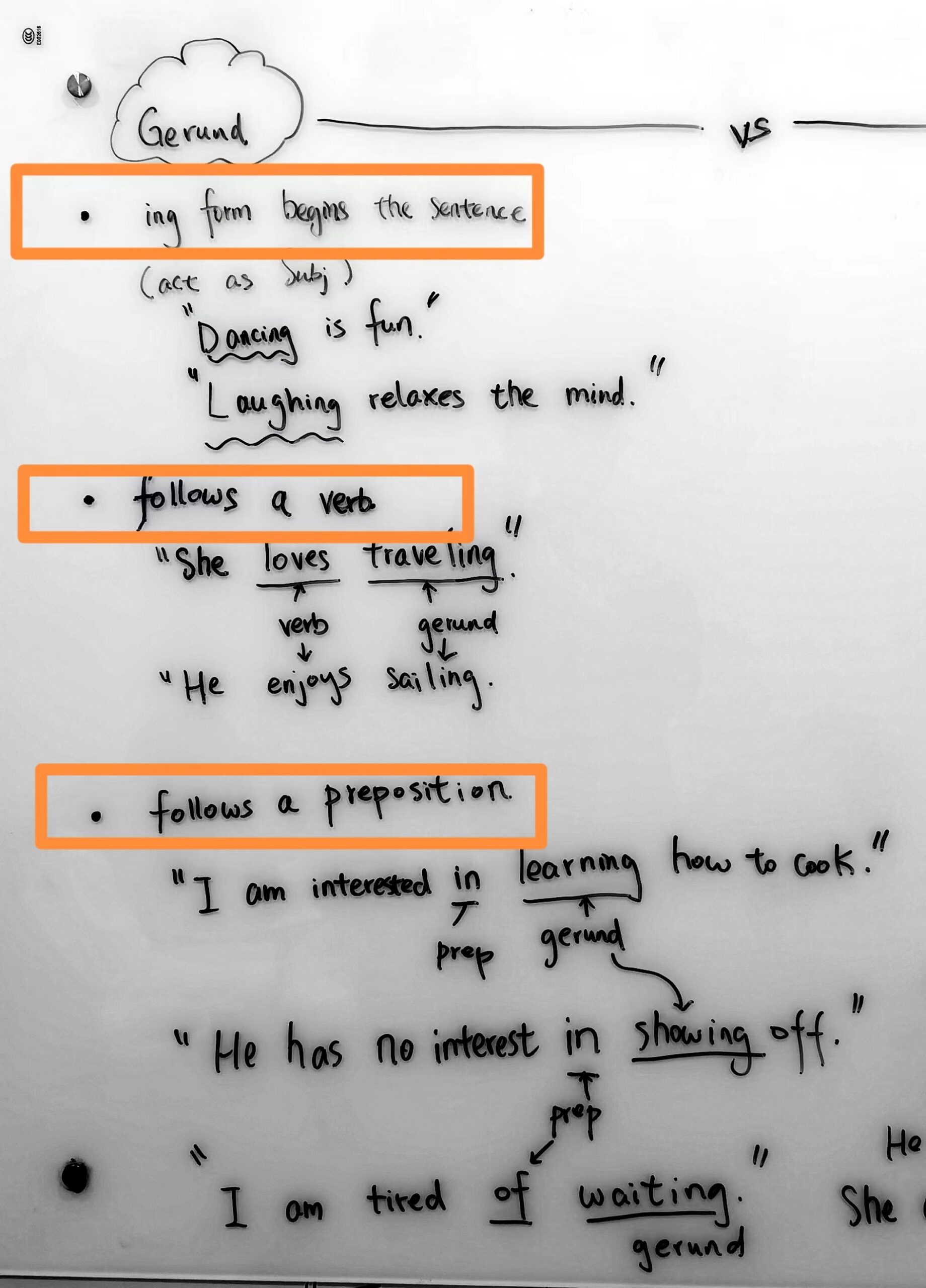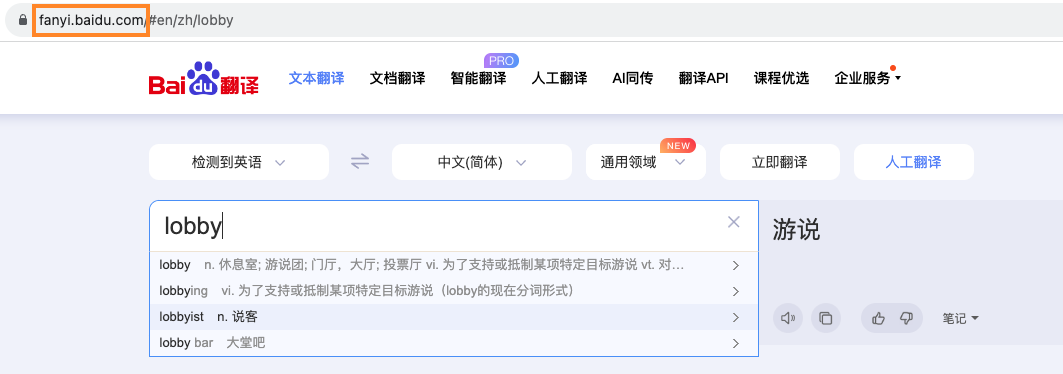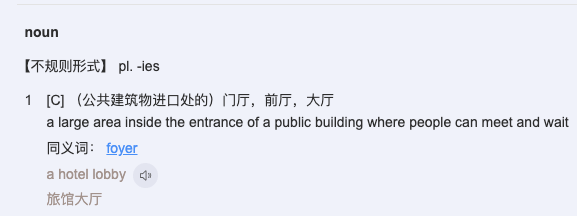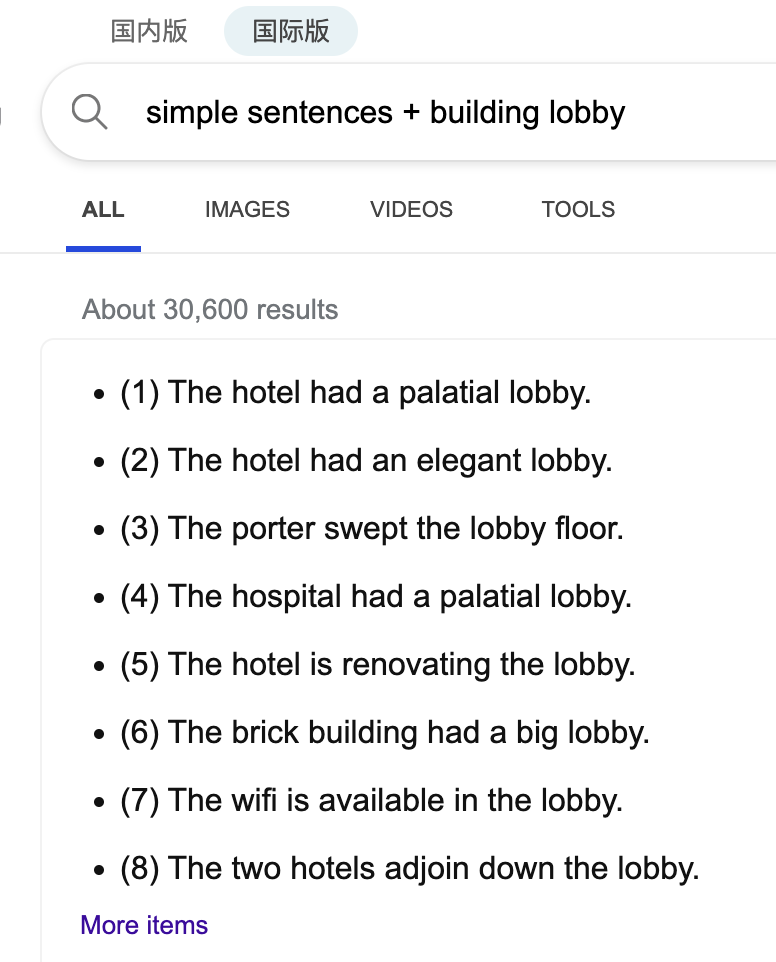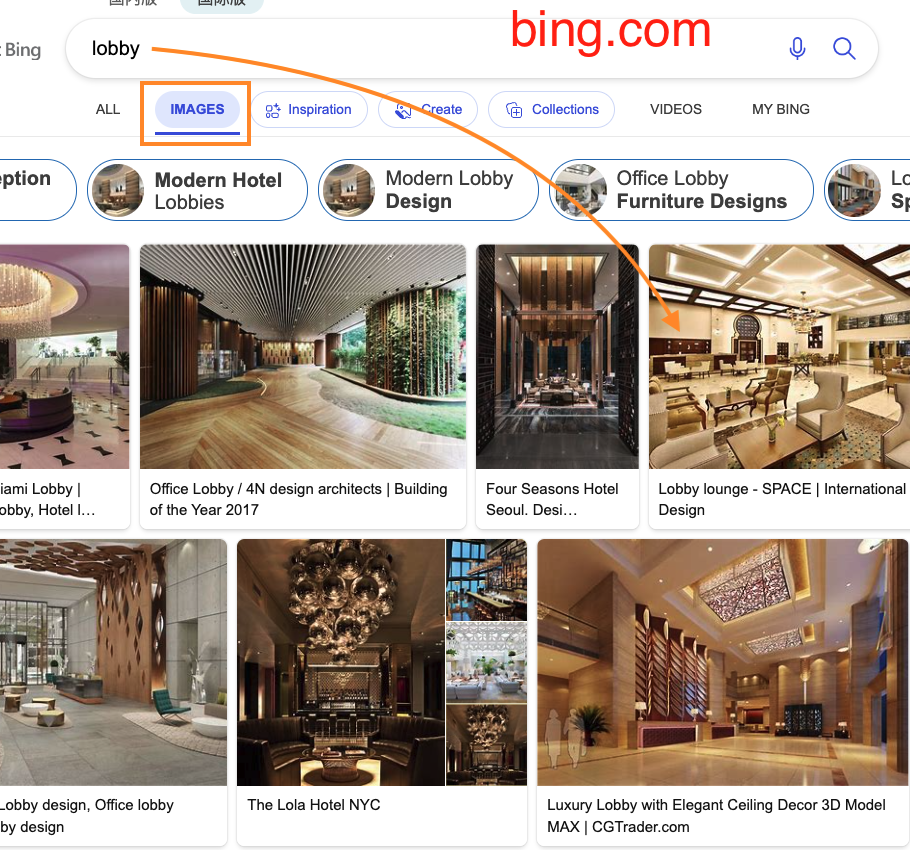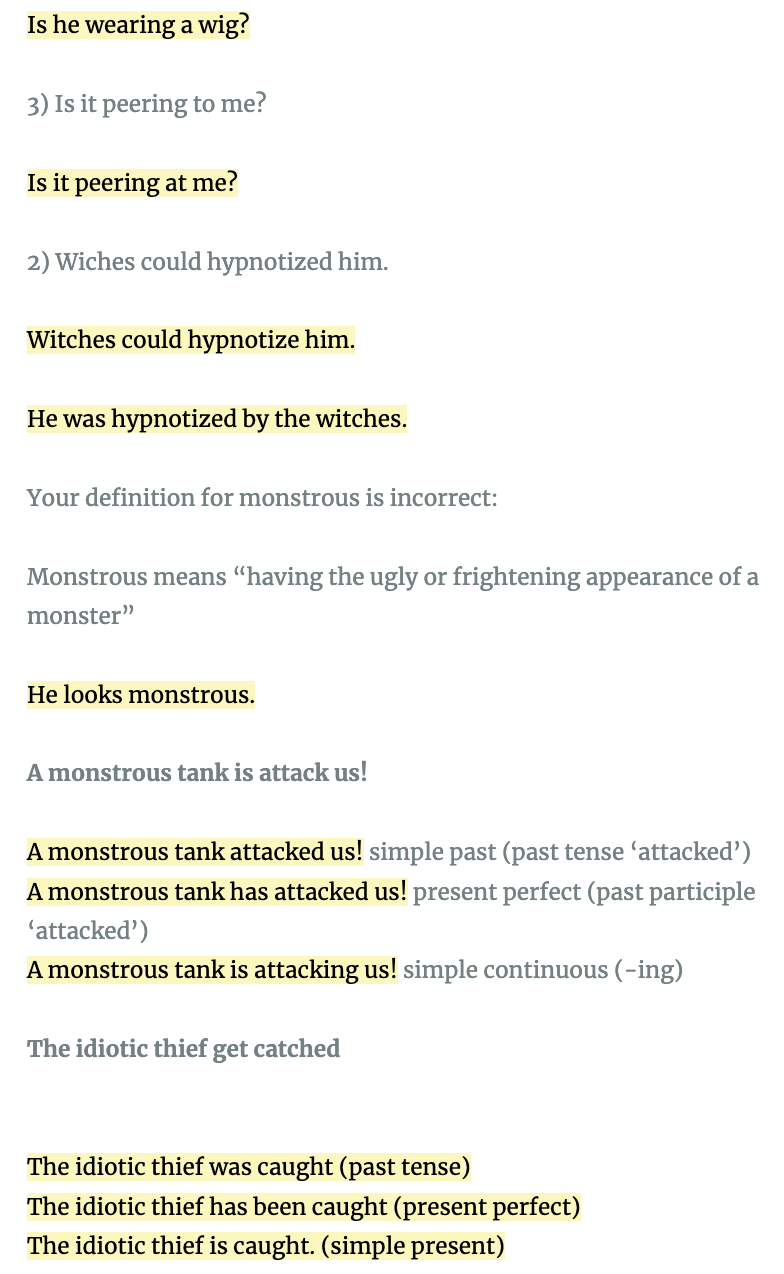-
Subject – Verb
examples:
A dog (subj) plays (verb).
subj – We use ‘A dog’ to refer to a non-specific dog. We use ‘the dog’ to mean a specific dog. This is to clarify the subject reference.
verb – the verb ‘play’ must have an s, because our subj is 3rd singular.
The cat (subj) runs (verb).
subj – We must say ‘A cat’ to refer to any, non-specific cat. We use ‘the cat’ to mean a specific cat.
verb – the verb ‘run’ stays in base form because our subj IS NOT 3rd singular.
People play.
subj – ‘people’ is plural, so we use the word to represent ‘in general’.
verb – the verb ‘play’ is in base form because subj IS NOT 3rd singular.
Boys fight.
subj – ‘Boys’ is plural, so we use the word to represent ‘in general’.
verb – the verb ‘fight’ is in base form because subj IS NOT 3rd singular.
The plane flies.
subj – ‘plane’ is 3rd singular. We use ‘The’ plane to clarify that it is a specific plane.
verb – the verb ‘fly’ must add ‘ies’, because our subj is 3rd singular.
The competition begins.
subj – competition is singular, so we use ‘the/a’ to clarify subject reference as explained above.
verb – the verb ‘begin’ must add ‘s’ because our subject is 3rd singular.
China grows.
subj – China is a specific place with a name, just like a person. So it is singular.
verb – the verb ‘grow’ must add ‘s’ because our subject is 3rd singular.
-
Subject – Verb (action) – Object
Subject – who or what performs the action of the verb.
Verb – expresses an action.
Object – whoever or whatever receives that action
Ricky plays volleyball.
Subject – Ricky
Verb – plays (we add ‘s’ because subj is 3rd singular)
Object – volleyball
My mom made spaghetti.
Subject – My mom
Verb – made (past tense)
Object – spaghetti
I eat beef.
Subject – I
Verb – eat (present tense: eat is ok in base form)
Object – beef
He rides a bike.
Subject – He
Verb – rides (present tense: ride + ‘s’ because subj is 3rd singular)
Object – a bike
The girl sits on the couch.
Subject – The girl
Verb – sits on (present tense: sit + ‘s’ because subj is 3rd singular)
Object – the couch
-
Subject + verb (action) + adverbs
examples
I played terribly
subj – I, verb – played, adverb – terribly
He sang beautifully.
subj – He, verb – sang, adverb – beautifully
She stood motionlessly.
subj – She, verb – stood, adverb – motionlessly
She undressed quickly.
subj – She, verb – undressed, adverb – quickly
I performed remarkably.
subj – I verb – stay adv – remarkably
The girl shouted excitedly.
subj – The girl verb – shouted adverb – excitedly
She dances beautifully.
subj – She verb – dances adverb – beautifully
I howled triumphantly.
subj – I verb – howled adverb – triumphantly
We drive crazily.
subj – We verb – drive adverb – crazily
The soldier dies miserably.
subj – soldier verb – dies adverb – miserably
My cat waits impatiently.
subj – My cat verb – waits adverb – impatiently
-
Linking verb – used to describe the subject. (non-action)
- is/am/was/will be (singular), are/were/will be(plural)
- appear
- sound
- feel
- smell
- become
- look (linking and action)
- seems
Subject + linking verb (“is/am/are/was/were/will be”) + Subject Complement (noun or adjective)
Ricky is a teacher.
Subject – Ricky, linking verb – is, sub complement (noun) – teacher
You are a monster!
subject – You, linking verb – are, sub complement (noun) – a monster
I am pretty.
subject – I, linking verb – am, sub complement (adj) – pretty
She was a boy.
subject – She, linking verb – was, sub complement (noun) – a boy
She will be a doctor.
subject – She, linking verb – will be, sub complement (noun) – a doctor
You are terrible!
subject – You, linking verb – are, sub complement (adj) – terrible
-
Subject + linking verb (‘sense’ – look/smell/seem/become) + subj complement (noun/adjective)
linking verb
object
- The family hears a burglar.
- I smell trouble.
- The world becomes a desert.
-
Subject + verb + adverb + adjective
She snores too loud.
subj – She, verb – snores, adverb – too, adjective – loud
I am really tired.
subj – I, verb – am, adverb – really, adjective – tired
She is really pretty.
subj – She, verb – is, adverb – really, adjective – pretty
Xiao Fei is very tall.
subj – Xiao Fei, verb – is, adverb – very, adjective – tall
The show is really exciting.
subj – The show, verb – is, adverb – really, adjective – exciting
The lake is quite beautiful.
subj – lake, verb – is, adverb – quite, adjective – beautiful
My dog is incredibly happy.
subj – dog, verb – is, adverb – incredibly, adjective – happy
We will be slightly late.
subj – We, verb – will, be adverb – slightly, adjective – late
-
Subject + helping verb + main verb + object
helping verb
main verb
Present Perfect – Subj + [have/has (helping verb)] + Past Participle (main verb)
I have eaten squid.
The turtle has eaten bugs since he was little.
My friend has bought a new car.
I have lived in LA for most of my life.
Present Continuous – Subj + to be [am, is, are] + present participle (main verb)
helping verb
main verb
I am playing video games.
Ricky is correcting homework.
My mom is cooking dinner.
We are fixing the car.
Can – ability
I can speak three languages.
I can play three sports.
She can juggle.
-
Subject + listed stative ’emotion’ feelings verb + (infinitive as object) + object complement
stative feeling verb – hate, like, love, want, hope, prefer, wish, hope, desire, need
stative thought verb – agree, remember, forget
Other verbs to use with infinitives:
agree: She agreed [to give].
ask*: I asked him [to leave].
decide: We decided [to go].
help*: He helped [to clean].
plan: She plans [to ]
hope: I hope [to pass].
learn: They learn how [to sing].
want*: I want [to come].
promise: I promise [to go].
Note most stative ’emotion’ verbs work, but not all:
I need [to know]. √
I desire [to win]. √
I love [to play]. √
I like [to know]. √
I hate [to go]. √
I adore [to …] (X)
I prefer [to eat]. √
We care [to …] (X)
I mind [to …] (X)
I want [to be]. √
I appreciate [to…] (X)
I need [to eat]. √
I wish [to donate]. √
I hope [to win]. √
I value [to…] (X)
I forgot [to clean].
subj – I, verb – forgot, object – to clean
I will remember [to fight]
subj – I, verb – remember, object – to fight
Let’s agree [to disagree].
subj – Let’s, verb – agree, object – to disagree.
Let’s agree [to work].
subj – Let’s, verb – agree, object – to work object
I desire [to win].
subj – I, verb – desire, object – to win.
I prefer [to be].
subj – I, verb – prefer, object – to be
I want [to play].
subj – I, verb – want, object – to play
She wants [to eat].
subj – She, verb – want, object – to eat
I hope [to win].
subj – I, verb – hope, object – to win
The elders need [to rest].
subj – elders, verb – need, object – to rest
-
Subject + helping verb + adjective + (infinitive as object) + object complement
I am reluctant(adj) [to quit].
subject – I
helping verb – am
adj – reluctant,
infinitive (acting as object) – to quit
They are happy (adj) [to live].
subject – We
helping verb – are
adj – happy
infinitive (acting as object) – to live
I am unable (adj) [to help].
subject – I
helping verb – am
adj – unable
infinitive (acting as object) – to help
-
Subject + [am/have/has/is] + (object) + [infinitive as adjective]
She is the girl (obj) [to marry].
subject – She, verb – is, obj – girl,
infinitive (acting as adjective to describe ‘girl’. ) – to marry
English 101 is the class (obj) [to take].
subject – English 101, verb – is, obj – class,
infinitive (acting as adjective to describe ‘class’. ) – to take
He has a joke (obj) [to tell].
subject – He, verb – has, obj – joke,
infinitive (acting as adjective to describe ‘joke’. ) – to tell
We have a job (obj) [to do].
subject – We, verb – have, obj – a job,
infinitive (acting as adjective to describe ‘job’. ) – to do
I have a wedding (obj) [to attend].
subject – I, verb – have, obj – a wedding,
infinitive (acting as adjective to describe ‘wedding’) – to attend
That is the team(obj) to beat.
subject – That, verb – is, obj – team,
infinitive (acting as adjective to describe ‘team’) – to beat
-
Subject + (action verb) + object + [infinitive as adverb] + complement
Do the ‘in order’ test.
I (earn) money [to live].
test: I earn money ‘in order’ [to live]. √
I (bought) a book [to read].
test: I bought a book ‘in order’ [to read]. √
I (ordered) a burger [to eat].
test: I ordered a burger ‘in order’ to eat. √
